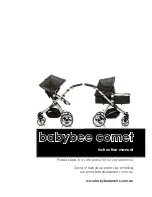
Sequence of operation
VAV Zone II Controllers
CARRIER CORPORATION ©2019
Installation and Start-up Guide
All rights reserved
52
Dehumidification
– Requires RH sensor
The zone controller monitors the RH sensor and can provide dehumidification if the sensor's value exceeds the
Occupied RH Control Setpoint
and the zone is occupied. If the zone is occupied, does not require heating, and the
air source is operating in a cooling mode, the controller will override the temperature control to increase airflow to
the zone. The primary air must have a sufficiently low dew point for dehumidification to function properly. During
the dehumidification mode, the heating setpoint is temporarily increased to a value halfway between the heating
and cooling setpoints to prevent overcooling in the zone. The controller uses a PID control loop to provide
dehumidification. If auxiliary heat is not available, the
Maximum RH Override Airflow
should be readjusted to
prevent overcooling or set to 0 to disable Dehumidification at the zone.
NOTE
If both control functions are enabled, the zone will control to the greatest calculated minimum cfm
(liters/second) airflow value of the three functions (temperature, RH, or IAQ).
Occupancy
The VAV Zone II's operation depends on the zone's occupancy state as determined by occupancy schedules or a
remote occupancy override.
Occupancy Schedules
– An occupancy schedule can be one of the following:
A local schedule set up directly in the controller using a touchscreen or Field Assistant.
A network schedule from an i-Vu® internal router. The VAV Zone II must be networked to an i-Vu® Open
Router or an i-Vu® internal router.
A
System Occupancy
network point. This point links the controller occupancy to another controller in the
network so that multiple zones can follow the occupancy of another VAV Zone or other controller on the
network.
To set up occupancy schedules, you first define a schedule for each day of the week and then define schedules
for the exceptions, such as holidays. The exceptions can be based on a date, a date range, or a week and day.
NOTES
The
Occupancy Schedules
property must be enabled (default).
A network schedule downloaded from the i-Vu® application will overwrite a local schedule that was set up in
a touchscreen or Field Assistant.
Remote Occupancy Override
– The controller monitors its
Remote
input that is typically connected to the isolated,
dry contact of an occupancy sensor located in the zone. (To use the occupancy override as described here, the
Standby Offset
value must be set to zero.) The controller can override the occupancy state based on whether or
not the space is actually occupied. If the occupancy sensor contact is in the same state as
Occ Override Normal
Logic State
setting, the zone follows its normal occupancy schedule. If the contact is in the opposite state, it
overrides the zone into the unoccupied mode. The input can be configured for normally closed or normally opened
contact types and is set to Open by default so that it does not affect the controller occupancy operation if left
unused.
The
Remote
input can also be used to expand the setpoints during occupied periods without affecting the
occupancy status of the zone. When the zone is occupied and the
Remote
input senses the occupant has left the
zone, if a value greater than zero has been entered for the
Standby Offset
, then the occupied setpoints will be
expanded by that number of degrees. This provides the ability to save energy but recover more rapidly rather than
having the zone go unoccupied.
Содержание VAV Zone II
Страница 109: ......
















































